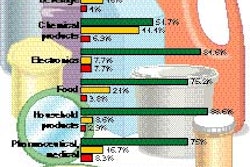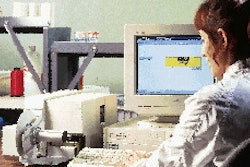In this column, another concept will be examined--the need to "sell" a packaging career to students--both from the opportunity side and also from the perspective of the obstacles.
In their summations of the discussions of groups of vocational schools and universities, Dr. Laura Caldwell of the University of Cincinnati and Kevin Lipsky of Indianhead Technical Institute agreed on a lot of suggestions. Perhaps the strongest area of agreement was in promoting more industry cooperation to make students aware of the potential careers in packaging.
They're not alone. The Packaging Education Forum's 1998 survey of program directors at universities with packaging courses showed that attracting new students was a major priority, second only to the need for lab equipment. The good news, as related by PEF secretary Bill Pflaum at the Education Summit, is that there are an increasing number of universities offering packaging courses, the number of courses is growing and so is the number of students.
Pflaum's report shows more than 1걶 students declared themselves "packaging" students, a gain of about 10% from '97. This doesn't include another 1껋 students who were taking courses in packaging, but didn't identify themselves as "packaging" students. Faculty in packaging is up to 70, from 51 in '97, and the number of courses considered to be packaging rose from 115 in '97 to 163 in '98.
No question this is a strong growth picture. Yet the premise behind the Education Summit is that the supply of qualified people for packaging positions is insufficient. Dr. Caldwell, for example, said that mechanical engineering grads at the University of Cincinnati not only have 100% placement, but they also start their careers with the third-highest level starting salary of all engineering grads at U. of C. In fact, she said, most of the grads with packaging course experience are so sought after they usually have a selection of job offers to consider.
If there was general agreement that the demand is strong, why is the supply of students not growing even more rapidly? And how can this be changed?
Becoming involved
All of us in packaging can help advance our own agenda by giving the schools and students an opportunity to learn about packaging and the types of careers that are available in it.
Whether or not we have the time or experience to become involved in regular school operations, most all of us can offer to share our experiences in the packaging community with students and educators. One of the great advantages of packaging is that it's universal: Packaging touches virtually every person in some way every day. So it's very easy to "connect" with students--to grab their attention--about a career path very few may have ever realized was available.
Of course, I've made it sound far easier than it might be. First, there's contacting the school to find out who coordinates Career-Day-type activities. Then, there's understanding the age group of the students involved, making the time commitment and tailoring a presentation to that level of student.
Ordinarily, there would be help available from an industry group or association, at least through hand-out materials to leave with the students, if not including assistance with the presentation. This is the main obstacle to coordinating an effort to bring the topic of packaging careers to our schools: Packaging is a function, not an industry, so we don't yet have this kind of institutional help.
Without technical assistance, the prospect can seem daunting. Wouldn't it be easier if we could call the Packaging Career Promotion group to get a set of guidelines for content or borrow visuals for, say, 6th-grade students, junior-high or 11th-grade students? Further, wouldn't it be great if we could pass along a toll-free phone number or a Web site where students could gain more details about packaging careers?
Because that help isn't yet available, I encourage all of us to check with the packaging universities and technical schools to find out the types of materials they may already have available for their own recruiting.
Just because promoting packaging careers won't be easy, is no excuse. If we are career packaging people, it's our obligation is to ensure that we keep new young people coming into the field. And to do that, young people need to understand how exciting and rewarding a career in packaging can be.



























